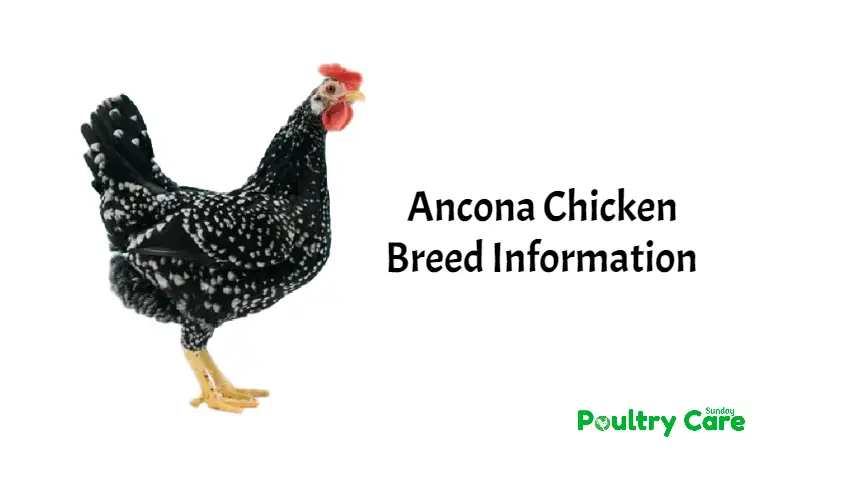Ancona chickens originated from Italy, from Marche. It got its name from the capital of March, Ancona, a seaport. The culture in Italy was one of fine cuisine, beautiful artworks, and beautiful music, and the beautiful Ancona Chicken became part of that culture, thriving in its home environment.
Because of their popularity, the bird spread to continue the breed in the UK as well as the United States. They were bred by mixing Leghorns along with other chicken breeds, making them highly hardy from the mixed ancestry. Their black feathers went on to them being called Black Leghorns, which is another name for them.
Ancona Chicken | Breed Profile
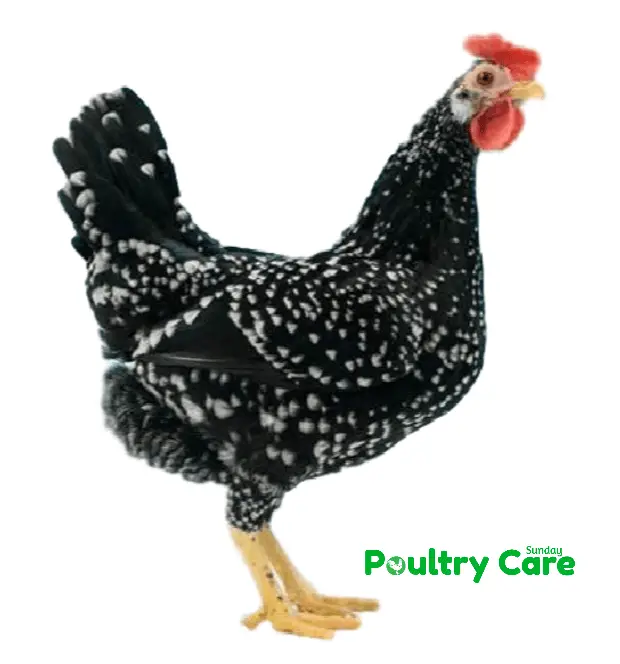
| Country of origin: | Italy; United Kingdom |
| Primary use: | Eggs |
| Weight: | Male: 2.5–2.8 kg Female: 1.8–2.1 kg |
| Temperament: | Active |
| Recognized Varieties: | Rose Comb, Single Comb |
| Egg production (annual): | 180 |
| Egg color: | White |
| Egg size: | Large |
| Comb type: | Single or rose |
Historical Background
The Ancona chicken’s journey began in the Marche region of Italy, specifically in the port city of Ancona, from which it derives its name. It is believed that the breed was developed through selective breeding of local landrace chickens, possibly influenced by breeds brought to Italy via trade routes during the 19th century. Anconas were first introduced to the United Kingdom in the late 1800s and subsequently made their way to America, where they quickly gained popularity for their robust health and prolific egg-laying capabilities.
Characteristics Of The Ancona Chicken
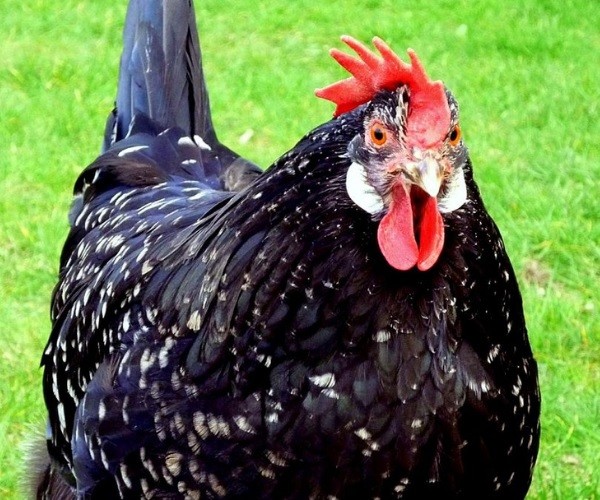
Ancona chickens have two varieties. One is a single-comb variety, and the other is a rose-comb variety. The American Poultry Association recognizes both of them. There is also a miniature variety. This bird is mainly bred for its eggs. On average, the hen can lay around 180-220 eggs in a year, large white eggs. Pullets will start laying from around 5 months old already.
They are hardy, lively birds. Their plumage is black. The plumage is also white-mottled. Out of three feathers, one will have a v-shaped white marking at the tip. The tail, the sickles, and all the primary fathers should have these white tips. You might notice that the black fathers have a greenish tint to them. Every time the bird molts, the white spots actually get bigger, so the older the bird becomes, the whiter the feathers are.
The Ancona has orange-red eyes and yellow legs with mottled black coloring, the same as their beaks. They have yellow skin. Their ear lobes are white. The rooster is very striking to look at. When you compare the Ancona to other egg-laying breeds, the Ancona is an outstanding egg layer. Adult roosters weigh around 2.8 kg., and the hen around 2.1 kg. They are very hardy, particularly in cold weather.
Behavior/Temperament
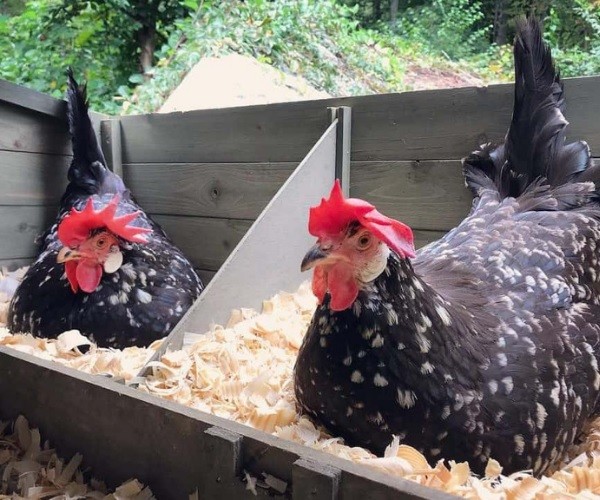
The Ancona Chicken temperament is one of a free-spirited bird. They are pretty good flyers, too, curious and alert. If you want these birds around, you will need some high fencing. They are happier when confined to small areas. They can become relatively tame if handled with kindness and care. It loves roaming around, foraging, and living for around 8 years.
Is The Ancona Chicken A Right Choice For You?
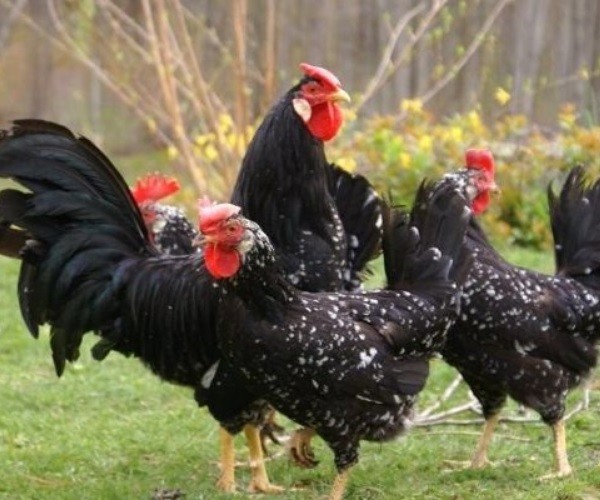
See if you feel this is a bird to include in your flock:
- Ancona chickens love their freedom. This means if you feel it’s a good choice for you, you will need to build a coop that gives them plenty of space.
- Their run needs to give them plenty of places to move and roam. They’ve got sturdy wings to fly, so you need high fences but not confinement.
- As chickens go, this breed tolerates the cold more than a lot of other breeds. The coop will still have to be draft-free as well as moisture-free, with good insulation for when the days are at their coldest.
- Some breeders like to follow the natural process of the four seasons by holding back on artificial lighting, allowing their chickens to molt in the darker winter months.
- They are free-spirited birds, alert and active, and well-equipped to survive against their predators.
Ancona Chicken: Care and Management
Ancona chickens are remarkably low-maintenance, thanks to their hardiness and foraging capabilities. They require primary poultry care, including access to clean water, a balanced diet, and secure housing to protect them from predators. Due to their active nature, they benefit from having space to roam and forage, which not only contributes to their health but also reduces feed costs. When it comes to health, Anconas are resilient, with few breed-specific health issues. Regular health checks, parasite control, and vaccinations ensure they remain in good condition.
FAQ: Ancona Chicken
Are Ancona chickens rare?
Ancona chickens are not considered rare, but they are less commonly found than more mainstream breeds. Their unique mottled plumage and egg-laying capabilities make them a prized choice for those in the know, though they might not be as readily available in all regions.
Are Ancona chickens cold-hardy?
Yes, Ancona chickens are quite cold-hardy, thanks to their dense feathering and robust nature. They can withstand cooler temperatures and continue to lay eggs throughout the winter months, making them an excellent choice for colder climates, provided they have shelter from the harshest conditions.
What is the difference between an Ancona chicken hen and a rooster?
The primary difference between an Ancona chicken hen and a rooster is size and appearance. Roosters are larger, with more pronounced combs and wattles, and have longer, more ornate tail feathers. Hens are smaller, lay eggs, and generally have less prominent physical features compared to roosters.
What are the Pros and Cons of the Ancona Chicken?
We Liked
We Don’t Like
- minus
Conclusion
The Ancona chicken, with its rich history, distinctive appearance, and remarkable productivity, stands out as a versatile and valuable breed in the world of poultry. Whether for egg production, pest control, or simply as a lively addition to the backyard, Anconas offers a blend of beauty, utility, and resilience that is hard to match. By providing them with the care and environment they need, keepers can enjoy the myriad benefits this exceptional breed has to offer, making them a cherished part of any flock.
Last Updated on January 14, 2025 by Pauline G. Carter

